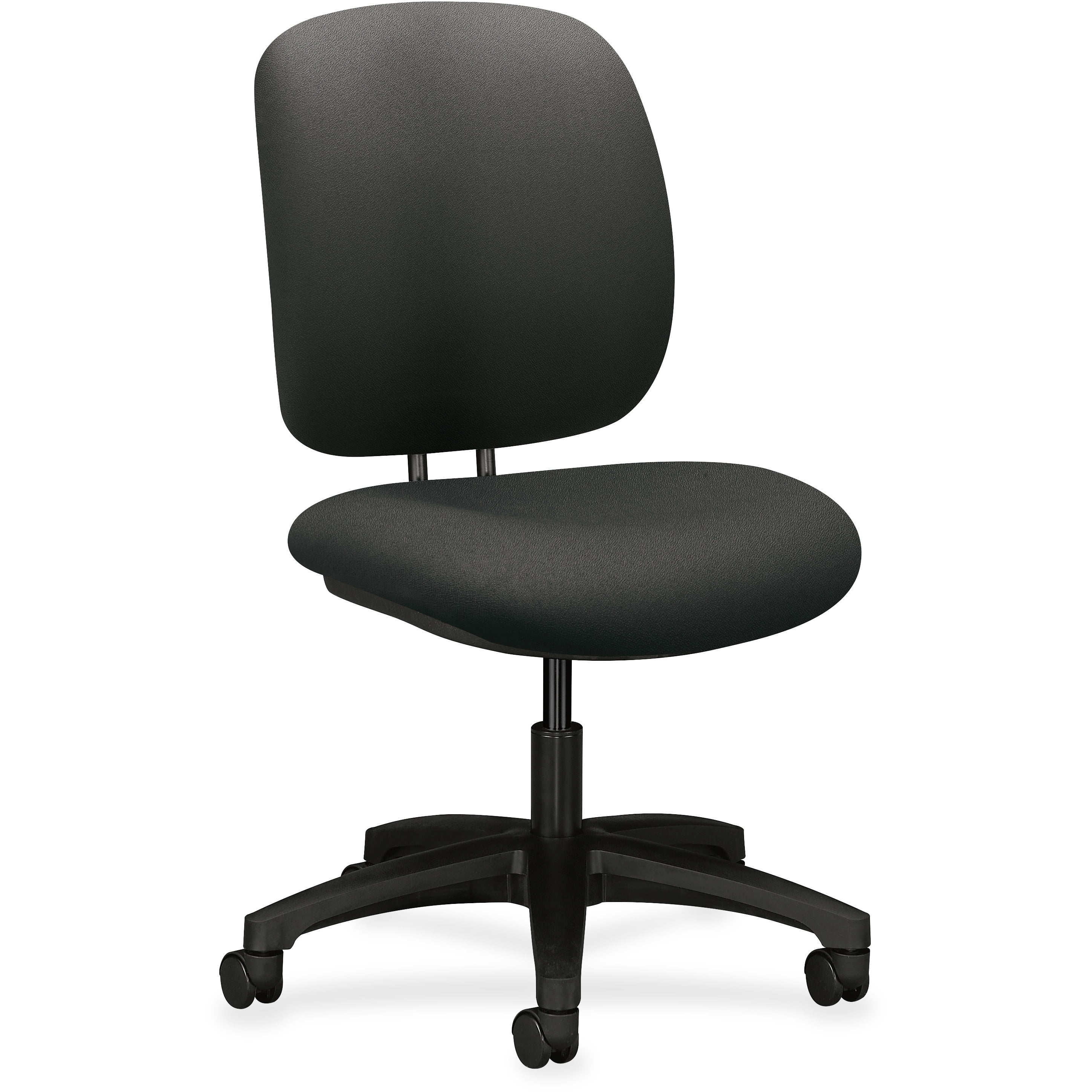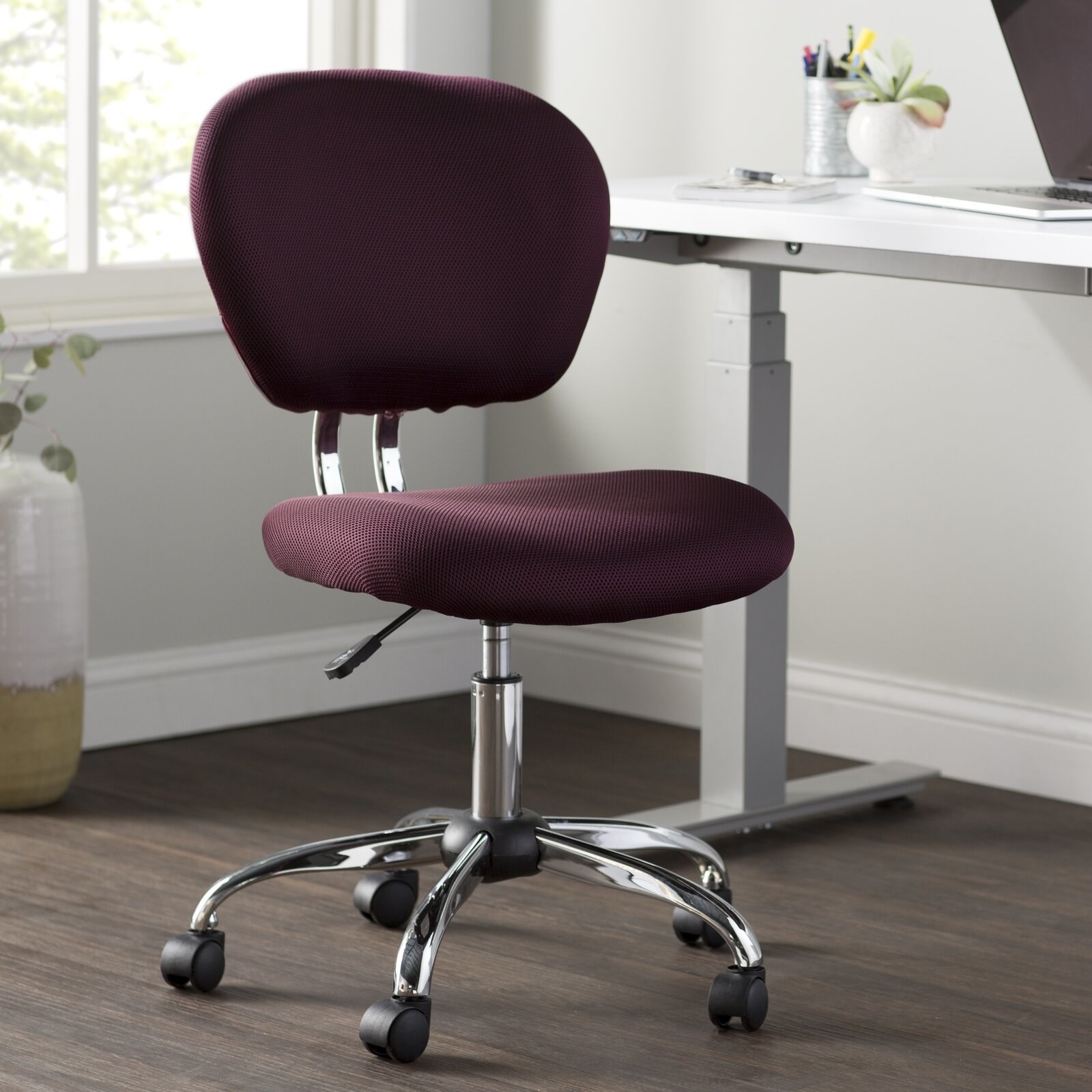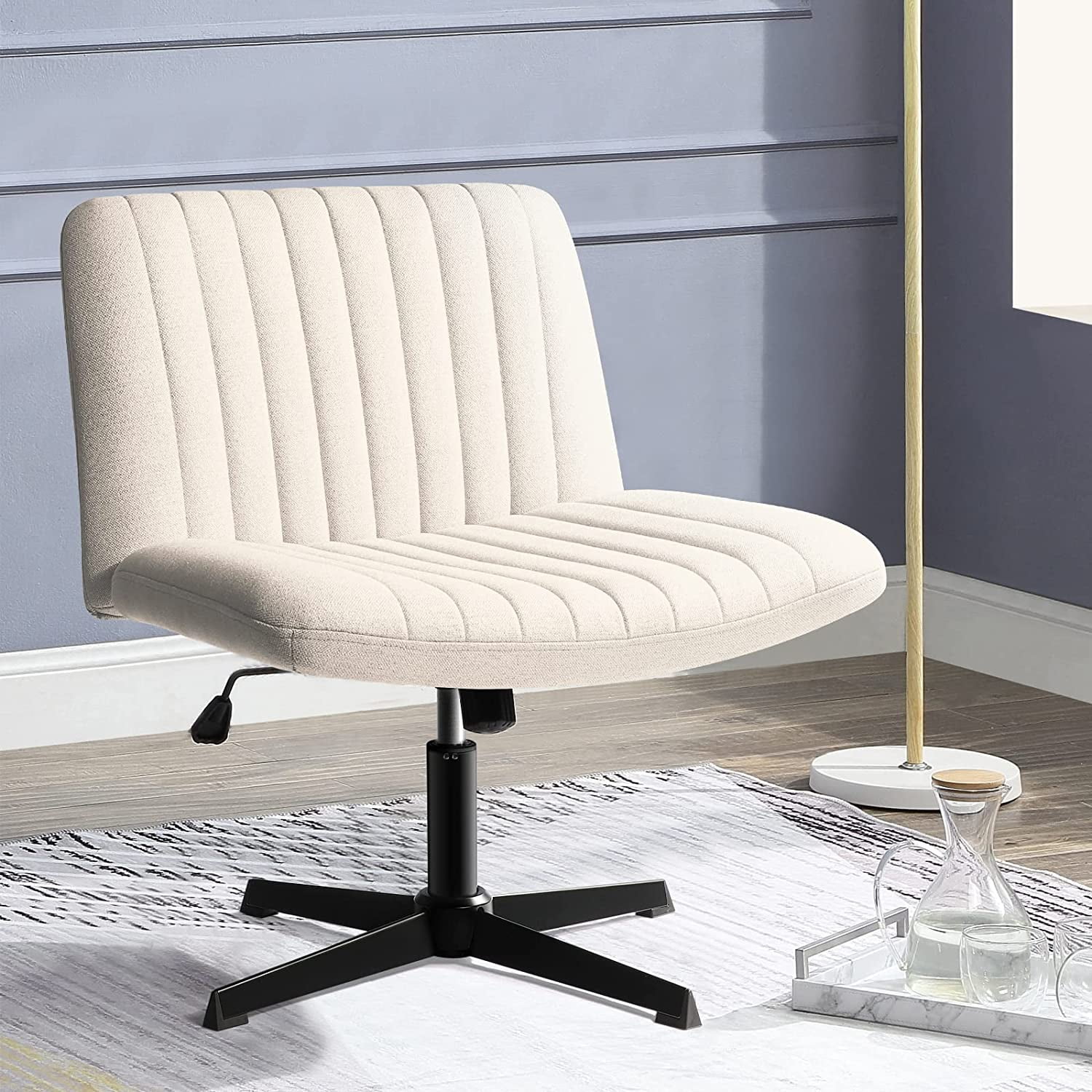Ergonomics and Comfort of Armless Chairs

Armless chairs, often overlooked in the ergonomic conversation, offer unique advantages for certain users and workstyles. Their lack of armrests promotes better posture and increased mobility, making them a compelling option for those who frequently shift positions or require a greater range of motion. However, selecting and using an armless chair effectively requires a keen understanding of ergonomic principles and careful consideration of materials and design features.
Ideal Posture in Armless Chairs
The ideal posture in an armless chair emphasizes a neutral spine, with the natural curves of the back maintained. This means avoiding slouching or hunching. Unlike chairs with armrests, which can encourage a more static posture, armless chairs necessitate active engagement of the core muscles to maintain proper alignment. The user’s hips should be slightly higher than their knees, ensuring a 90-degree bend at both the hips and knees. This encourages proper weight distribution and reduces strain on the lower back. The head should be held upright, with the ears aligned over the shoulders. This differs from chairs with armrests, where armrests can support the forearms, potentially leading to a more relaxed, but potentially less ergonomic, posture if the chair isn’t properly adjusted.
Seating Materials and Breathability
The choice of seating material significantly impacts comfort and breathability, especially during prolonged periods of sitting. Mesh offers excellent breathability, allowing for airflow and reducing the buildup of heat and moisture. This makes mesh a preferred choice for warmer climates or individuals who tend to perspire. However, mesh can sometimes lack the plushness of other materials. Fabric, particularly those made from breathable materials like cotton or linen blends, provides a balance of comfort and breathability, although it may not be as airy as mesh. Leather, while luxurious, tends to retain heat and may not be as breathable. For armless chairs, which often require more active engagement from the user to maintain posture, breathability is particularly important to prevent discomfort from overheating.
Lumbar Support in Armless Chairs
Adequate lumbar support is crucial in any chair, but even more so in an armless chair where the lack of armrests means the back needs to work harder to maintain posture. A good armless chair should feature a contoured backrest that provides support to the lower back’s natural curve. Features like adjustable lumbar support, allowing for personalized adjustment to match individual back curves, are highly beneficial. Chairs with a flexible backrest that can conform to the user’s movements also enhance comfort and support. The presence of a built-in lumbar support pillow or the ability to add one is another important consideration. Without proper lumbar support, users risk developing back pain and discomfort.
| Material | Lumbar Support | Adjustability | Price Range |
|---|---|---|---|
| Mesh | Adjustable, often built-in | Height, sometimes tilt | $100 – $500 |
| Fabric | Often requires separate lumbar pillow | Limited, typically only height | $50 – $300 |
| Leather | Variable, often requires separate lumbar pillow | Limited adjustability | $200 – $1000+ |
Functionality and Use Cases for Armless Chairs: Best Desk Chair Without Arms

Armless chairs, often overlooked in the sea of ergonomic office furniture, offer a surprising versatility and adaptability for a range of tasks and body types. Their minimalist design, while seemingly simple, unlocks unique functionalities that cater to specific needs and preferences, making them a compelling alternative to their armed counterparts. Let’s explore how these chairs perform in various scenarios and for different individuals.
Best desk chair without arms – The absence of arms opens up a world of possibilities, changing the dynamics of how we interact with our workspaces and activities. This seemingly small detail has a significant impact on posture, movement, and overall comfort, depending on the task at hand and the user’s physique.
Advantages of Armless Chairs for Different Tasks
The open design of armless chairs makes them incredibly adaptable to various activities. Their lack of armrests allows for greater freedom of movement and a more dynamic posture, which is beneficial for certain tasks.
- Gaming: Armless chairs allow for greater freedom of movement, crucial for immersive gaming experiences requiring quick spins and stretches. The lack of armrests prevents restriction and allows for better body positioning for optimal control of peripherals.
- Writing: For writers who prefer to move frequently while working, armless chairs provide unrestricted movement. The absence of arms prevents hindering hand and arm movements, improving comfort during long writing sessions. This is particularly helpful for those who write by hand or use a drawing tablet.
- Working at a Standing Desk: Armless chairs are perfectly suited for use with standing desks. They easily slide under the desk when not in use, optimizing space and allowing for seamless transitions between sitting and standing. The lack of arms doesn’t obstruct the transition between sitting and standing.
Suitability of Armless Chairs for Different Body Types and Sizes, Best desk chair without arms
While armless chairs offer many advantages, their suitability does depend on the individual’s body type and size. Consideration should be given to height, weight, and posture to ensure optimal comfort and support.
Generally, individuals with smaller builds might find armless chairs more comfortable than those with larger frames. Larger individuals may require additional lumbar support or a chair with a wider seat to prevent discomfort. Proper posture is crucial regardless of body type; slouching can lead to back pain, even in an armless chair.
Potential Drawbacks and Mitigation Strategies
While armless chairs provide flexibility, they also present some potential drawbacks. Understanding these limitations and implementing appropriate solutions ensures a positive user experience.
- Lack of Arm Support: The most obvious drawback is the absence of armrests. This can lead to fatigue or discomfort during prolonged periods of sitting, especially for those who rely on armrests for support. Solution: Using a small side table or a well-placed armrest pillow can provide supplemental support as needed.
- Posture Issues: Without armrests to guide posture, users may be more prone to slouching. Solution: Maintaining good posture is crucial. Using a lumbar support pillow and regularly adjusting sitting position can help alleviate this. A footrest can also help improve posture by ensuring proper hip and knee angles.
- Limited Adjustability: Many armless chairs offer fewer adjustment options compared to their armed counterparts. Solution: Choose a chair with adjustable height and ideally, lumbar support to customize the chair to your body and needs.
Design and Aesthetics of Armless Chairs

The absence of arms in a chair opens up a world of design possibilities, allowing for a greater degree of flexibility and visual impact. Armless chairs can seamlessly integrate into various interior styles, from the sleek minimalism of a modern apartment to the warm rustic charm of a traditional farmhouse. The choice of design and materials significantly impacts the overall aesthetic and functionality of the chair.
Design Styles of Armless Chairs
Armless chairs transcend simple functionality; they are design statements. Their aesthetic appeal rests heavily on the interplay of form and material, reflecting diverse design philosophies.
Modern Armless Chairs: Often characterized by clean lines, geometric shapes, and a focus on functionality. Think of a sleek, sculpted chair made from molded plastic or metal, perhaps with a vibrant color or a subtly textured surface. The emphasis is on simplicity and efficiency, reflecting a contemporary aesthetic. These chairs often feature a low profile and a slightly curved seat for comfortable posture. Imagine a chair with a chrome base and a white, fiberglass shell – a perfect complement to a minimalist living room.
Minimalist Armless Chairs: Taking the modern aesthetic a step further, minimalist armless chairs prioritize simplicity above all else. They typically feature a single, unadorned form, often made from a single material, such as wood or metal. The visual impact is one of understated elegance, a chair that almost disappears into its surroundings while subtly enhancing them. A simple wooden chair with a slightly tapered back and a natural finish would exemplify this style. Its beauty lies in its lack of ornamentation.
Traditional Armless Chairs: These chairs evoke a sense of history and craftsmanship. They may feature ornate details, such as carved wood, tufted upholstery, or intricate weaving. Materials might include richly stained wood, luxurious fabrics like velvet or linen, and perhaps even metal accents. Think of a classic side chair made from dark mahogany, with a gently curved back and subtly turned legs. This style often projects an air of sophistication and timeless elegance.
Materials Used in Armless Chair Construction
The material choices for an armless chair profoundly affect both its visual appeal and its longevity.
Wood: From sleek modern designs to rustic traditional pieces, wood offers versatility and warmth. Hardwoods like oak and walnut offer durability and rich color variations, creating a sense of sophistication. Softer woods like pine can be more affordable but might require more maintenance. The grain and finish of the wood can dramatically alter the chair’s overall aesthetic.
Metal: Metal armless chairs, often made from steel, aluminum, or chrome, offer a modern, industrial aesthetic. Metal chairs can be lightweight yet sturdy, and their sleek lines contribute to a contemporary feel. The finish of the metal – polished chrome, matte black, or a powder-coated color – can significantly impact the overall visual impression.
Plastic: Plastic armless chairs are incredibly versatile, offering a wide range of colors, textures, and designs. They can be lightweight, easy to clean, and relatively inexpensive. However, the perceived durability might be lower compared to wood or metal, and the aesthetic can range from sleek and modern to somewhat cheap depending on the quality and design.
Upholstery: Fabric upholstery adds comfort and visual interest. The choice of fabric – linen, velvet, leather – impacts both the feel and the look of the chair. Leather offers a luxurious and durable option, while linen provides a more relaxed and casual aesthetic. The color and pattern of the upholstery are crucial elements in defining the overall style.
Armless Chair Design Concepts
Concept 1: The “Sculpt” Chair: A modern armless chair made from molded fiberglass reinforced plastic (FRP). Its smooth, flowing lines and vibrant teal color create a striking visual statement. Targeted towards young professionals and design-conscious individuals who value both style and comfort. The FRP construction ensures durability and easy maintenance.
Concept 2: The “Artisan” Chair: A traditional-style armless chair crafted from solid walnut wood. The chair features a slightly curved back and tapered legs, showcasing the natural beauty of the wood grain. The rich, dark stain enhances the wood’s inherent warmth. This chair is aimed at those who appreciate handcrafted furniture and a classic aesthetic, seeking a piece that will last for generations.
Concept 3: The “Flow” Chair: A minimalist armless chair made from powder-coated steel. Its simple, geometric design emphasizes clean lines and functionality. The matte black finish provides a sophisticated and understated look. The chair’s lightweight yet sturdy construction makes it ideal for small spaces or multi-functional rooms, appealing to those who value both form and practicality.
